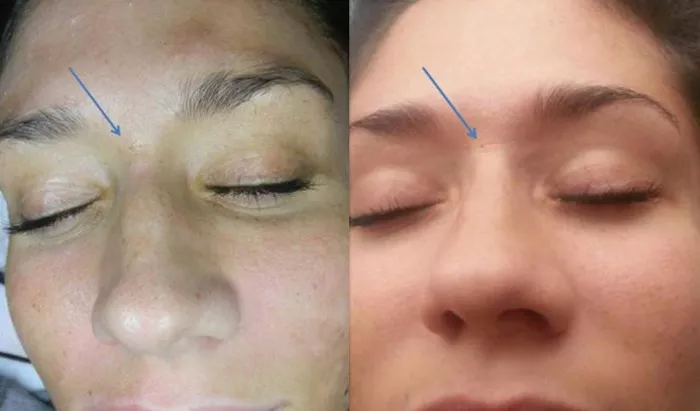Microdermabrasion is a popular cosmetic procedure that uses a special device to exfoliate the skin and remove dead skin cells. This treatment can improve the appearance of fine lines, wrinkles, acne scars, and hyperpigmentation, and can leave the skin looking smoother and more radiant. Many individuals wonder if a single microdermabrasion treatment is enough to achieve the desired results. In this article, we will explore the benefits and limitations of a single microdermabrasion treatment and what to expect from a single session.
What is Microdermabrasion?
Microdermabrasion is a non-invasive cosmetic procedure that uses a special device to exfoliate the skin and remove dead skin cells. The device typically uses tiny crystals or a diamond-tipped wand to gently abrade the surface of the skin, which can improve the appearance of fine lines, wrinkles, acne scars, and hyperpigmentation. Microdermabrasion is a safe and effective treatment that can be performed on all skin types and colors.
Benefits of Microdermabrasion
Microdermabrasion has several benefits for the skin, including:
Exfoliation: Microdermabrasion removes dead skin cells and promotes cell turnover, which can improve the texture and tone of the skin.
Reduced appearance of fine lines and wrinkles: Microdermabrasion can stimulate collagen production, which can reduce the appearance of fine lines and wrinkles.
Improved skin tone and texture: Microdermabrasion can improve the overall tone and texture of the skin, leaving it looking smoother and more radiant.
Reduced appearance of acne scars and hyperpigmentation: Microdermabrasion can help to reduce the appearance of acne scars and hyperpigmentation by removing the outer layer of dead skin cells.
Limitations of a Single Microdermabrasion Treatment
While microdermabrasion has many benefits for the skin, a single treatment may not be enough to achieve the desired results for all individuals. Some limitations of a single microdermabrasion treatment include:
Temporary results: The results of a single microdermabrasion treatment are typically temporary and may only last for a few weeks to a few months.
Limited improvement: A single microdermabrasion treatment may only provide limited improvement in the appearance of fine lines, wrinkles, acne scars, and hyperpigmentation.
Deep scars and wrinkles: Deep scars and wrinkles may require more aggressive treatments, such as laser resurfacing or chemical peels, to achieve significant improvement.
Severe acne: Microdermabrasion may not be effective for individuals with severe acne, as it may exacerbate existing inflammation and irritation.
What to Expect from a Single Microdermabrasion Treatment
During a single microdermabrasion treatment, a specialized device will be used to gently exfoliate the skin and remove dead skin cells. The device may use tiny crystals or a diamond-tipped wand to abrade the surface of the skin. The treatment is typically painless and does not require anesthesia. However, some individuals may experience mild discomfort or a tingling sensation during treatment.
The treatment typically takes between 30 minutes to an hour, depending on the size of the treatment area. After the treatment, the skin may be slightly red and sensitive, but this should subside within a few hours. Some individuals may experience mild peeling or flaking of the skin in the days following treatment.
After Treatment Care
After microdermabrasion treatment, it is important to take proper care of your skin to ensure the best possible results. Some tips for after-treatment care include:
Avoiding sun exposure: Sun exposure can make the skin more sensitive and increase the risk of complications. It is recommended to avoid sun exposure for at least a week after treatment.
Using a gentle cleanser: Use a gentle, non-abrasive cleanser to cleanse the skin after treatment.
Moisturizing: Moisturize the skin regularly with a gentle, non-comedogenic moisturizer to keep it hydrated and healthy.
Avoiding certain skincare products: Avoid using certain skincare products, such as retinoids and exfoliating scrubs, for at least a week after treatment.
Staying hydrated: Drink plenty of water to keep the skin hydrated and healthy.
Avoiding hot showers and baths: Hot water can make the skin more sensitive and increase the risk of complications. It is recommended to avoid hot showers and baths for at least a day after treatment.
Avoiding sweating: Sweating can make the skin more sensitive and increase the risk of complications. It is recommended to avoid strenuous exercise and activities that may cause sweating for at least a day after treatment.
Conclusion
While a single microdermabrasion treatment can provide some improvement in the appearance of fine lines, wrinkles, acne scars, and hyperpigmentation, it may not be enough to achieve significant and long-lasting results for all individuals. The benefits and limitations of a single microdermabrasion treatment should be discussed with your provider to determine if this treatment is right for your specific needs and goals. With proper preparation and after-treatment care, you can achieve smoother, more radiant skin with microdermabrasion.


